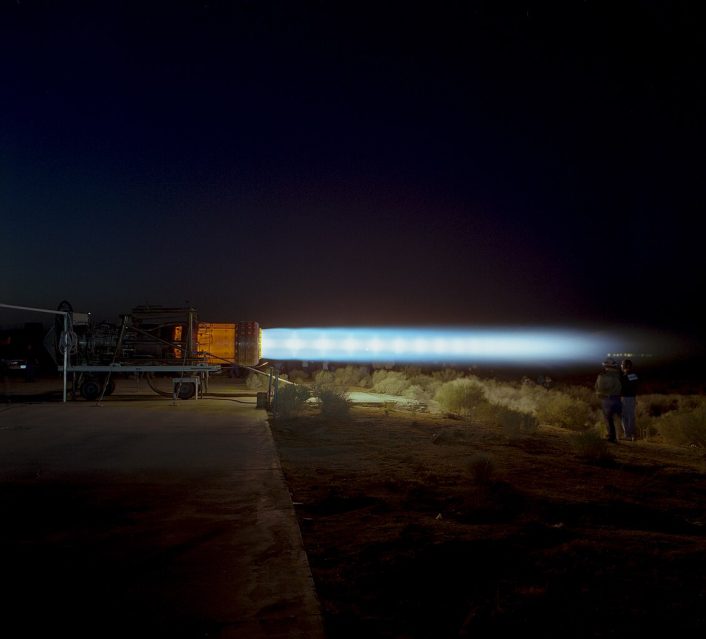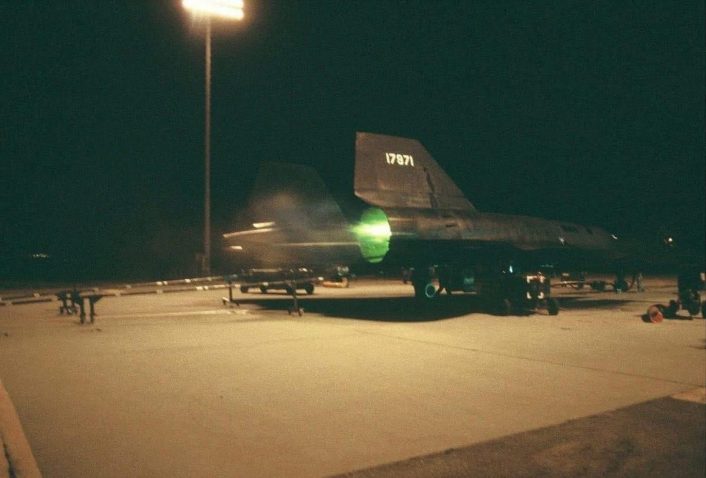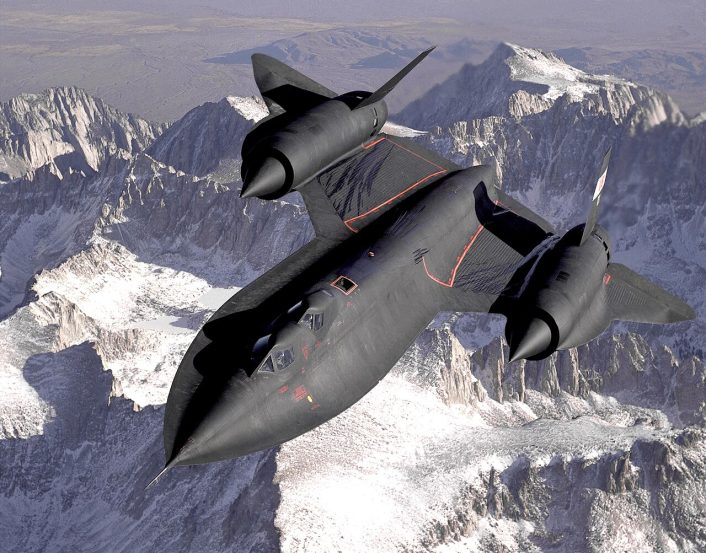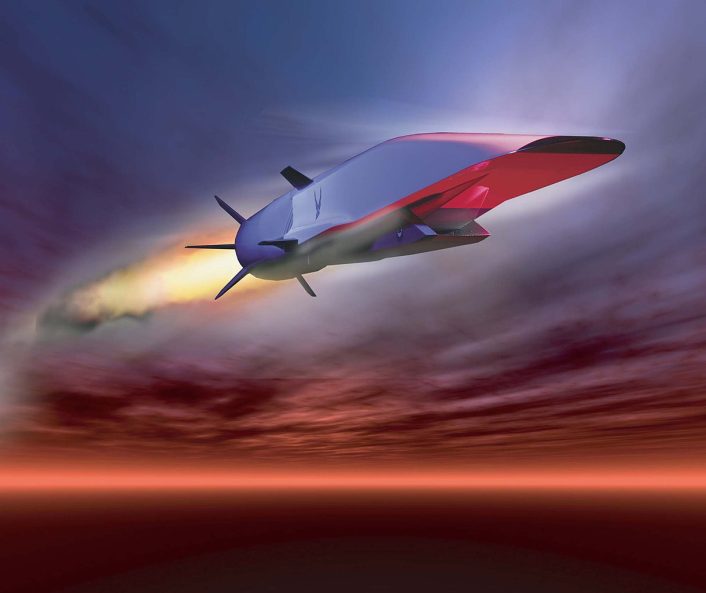Flying at altitudes and speeds unheard of for contemporary jet aircraft, the Blackbird family needed a fuel with unique properties to perform at the extremes to which the aircraft would be subjected.
The Mach 3+ speeds of the Lockheed A-12, M-21, YF-12A, and SR-71 would heat the fuel up to 350 degrees, and lacking insulated fuel tanks, the aircraft needed a fuel with a high flash point that would not vaporize or explode under tremendous heat and pressure. The jet fuels available at the time would not work in this environment, someone would have to create such a fuel, and in addition to powering the plane, the new fuel was also used as an internal coolant, cooling important components of the plane.
A flying fuel tank
With a total of six fuel tanks, the thirsty Lockheed SR-71 had a fuel capacity of more than 80,000 pounds of fuel. The tanks occupied areas within the fuselage and wings holding 12,219 gallons total. Each of the SR-71’s two cockpits had large fuel quantity gauges.
In addition to powering the twin Pratt & Whitney JP-58 engines, the fuel was used to cool the aircraft and its components. A temperature control valve ensured that hotter fuel was sent to the engines, while cooler fuel was used to maintain a suitable temperature for the retracted landing gear, hydraulics, avionics and other systems, including keeping the cabin at a comfortable temperature.

An automated fuel transfer system ensured that fuel was consumed in a manner that maintained the aircraft’s center of gravity (CG) during supersonic flight. The pilot manually controlled forward fuel transfer upon returning to subsonic flight. A system of 16 AC-powered, fuel-cooled, centrifugal electric fuel booster pumps moved fuel to the engines and through heat exchangers through the left and right manifolds.
An engine-driven pump provided 1,800 psi (pounds per square inch) of recirculated fuel to drive various engine components before returning to the aircraft’s fuel system and burning. Some of the components were used to control the afterburner nozzles and to control the position of the two-position inlet guide vanes.
The liquid nitrogen was carried in three Dewar flasks located in the nose wheel well of the aircraft. All fuel tanks were pressurized with nitrogen to 1.5 psi above ambient pressure, forcing ambient air to be vented. The empty space above the fuel in the tanks would be dominated by nitrogen gas which would prevent autogenous ignition. The nitrogen also prevented the pressure from crushing the empty tanks when the SR-71 descended to higher air pressure altitudes.
A new fuel
Developed by chemist Clarence Brown Eichman for use in the Pratt & Whitney J58 engine in 1955 and produced by Shell Oil in accordance with Pratt & Whitney specification PWA-535 and government specifications MIL-DTL-38219, Jet Propellant 7, commonly known as JP-7, was what consumed the J58. Originally developed for a Navy aircraft, the J58 found a new home on the CIA’s (Central Intelligence Agency) Lockheed A-12 spy plane and later on Lockheed family aircraft. Some sources also link the J58 to the XB-70 Valkyrie project.
MIL-DTL-38219 specified a fuel that did not cause nausea and was “water white, clean and bright” at room temperature. A high flash point and high thermal stability would also be required. The fuel would also be used in the engine’s hydraulic systems and as a heat sink for various aircraft components. Additional requirements stated that the fuel could not decompose and deposit coke and varnish in the fuel system. A high luminometer number (flame brightness index) was required to minimize heat transfer to the burner parts.


JP-7 is unique because it is not a distillate fuel, but rather a mixture of a very low concentration of highly volatile components such as benzene or toluene with very small amounts of oxygen, sulfur or nitrogen impurities. I can use it in a wide range of temperatures, from the extreme cold of high altitudes to the high temperatures created in the Blackbirds’ uninsulated fuel tanks during supersonic flight. Composed primarily of hydrocarbons with the addition of fluorocarbons to increase lubricating properties, it also contains a compound known as A-50 that helped disguise the radar signature of the exhaust plume.
The melting point of the fuel is -22 degrees Fahrenheit with a boiling point of around 550 degrees Fahrenheit. The flash point is 140 degrees Fahrenheit and it is said that a lit match dropped on a spill would not ignite the fuel. Fuel specialists would use a special kit with a Bunsen burner to ensure the JP-7’s proper flash point.


To ignite the fuel, the Blackbirds carried triethylborane (TEB) in small cylinders mounted on top of the J58 engines. The TEB, which ignites upon contact with air with even very low oxygen content, would be used to ignite both the main engine and the afterburner sections. When the TEB exploded, it would in turn ignite JP-7. Holding one and a quart, the tank contained enough TEB for 16 engine starts/restarts or afterburners. The TEB produced a telltale green flash as it exploded to start the engines.
In addition to being difficult to ignite, JP-7 would also dissolve the linings of fuel hoses and tanks used in fuel trucks. Special techniques required treating these items by washing them several times with JP-7 to dissolve the coatings and ensure that the fuel placed in the Blackbirds was free of contamination.
A flying fuel station
Since the JP-7 is unique and the Blackbirds require in-flight refueling support, a tanker would be needed to handle fuel and refueling operations. The Boeing KC-135 Stratotankers were modified with special pipes between the fuel tanks, allowing the JP-7 and JP-4 to move between multiple tanks. This isolated JP-4 from KC-135 from JP-7. Nearly all aircraft in the United States Air Force inventory also flew with the JP-4. A total of 56 KC-135s were modified to the KC-135Q version to handle the JP-7, and some were later converted to KC-135T.


The KC-135Q crews received special training in radio-silent procedures. A special radio known as the ARC-50 installed on both the tankers and the Blackbirds allowed for coded communications with varying power levels for the transmitter. Once the same frequency was set and the correct codes were set, the range and heading of each aircraft would be displayed on the other aircraft. Boom operators had to be certified to refuel the SR-71. Later some McDonnell Douglas KC-10s would also be used to refuel.
Without tanker support, the SR-71’s range would have been very limited; most missions required at least one refueling, but often multiple instances of refueling. The tankers could even refuel the Blackbirds on the ground if necessary using transfer hoses between the two aircraft.


JP-7’s last breath
The JP-7 was only used on one other vehicle besides the A-12, M-12, YF-12A and SR-71 families. It was the experimental Boeing X-51A Waverider equipped with a Pratt & Whitney SJY61 scramjet engine. The X-51A was an unmanned test demonstrator for the United States Air Force, and a total of four were built.
Carried into the air by a Boeing B-52, the Waverider was launched with the solid rocket booster accelerating it to Mach 4.5 before being jettisoned. The scramjet then takes over and burns the JP-7 after being ignited by ethylene. The vehicle accelerated to Mach 5.1 during the final flight on May 1, 2013 and traveled more than 230 nautical miles.





